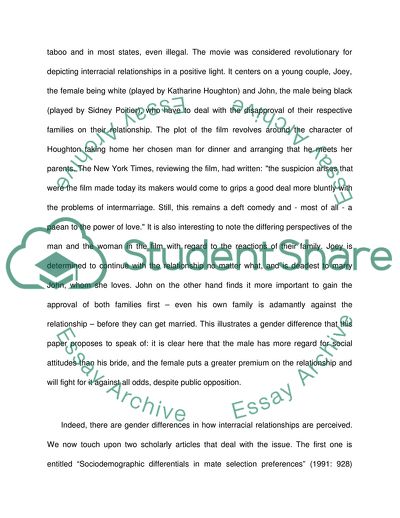Cite this document
(Gender and Interracial Relationships Essay Example | Topics and Well Written Essays - 1250 words - 1, n.d.)
Gender and Interracial Relationships Essay Example | Topics and Well Written Essays - 1250 words - 1. https://studentshare.org/sociology/1761650-the-effects-of-gender-attitudes-towards-interracial-marriages-guess-who-is-coming-to-dinner
Gender and Interracial Relationships Essay Example | Topics and Well Written Essays - 1250 words - 1. https://studentshare.org/sociology/1761650-the-effects-of-gender-attitudes-towards-interracial-marriages-guess-who-is-coming-to-dinner
(Gender and Interracial Relationships Essay Example | Topics and Well Written Essays - 1250 Words - 1)
Gender and Interracial Relationships Essay Example | Topics and Well Written Essays - 1250 Words - 1. https://studentshare.org/sociology/1761650-the-effects-of-gender-attitudes-towards-interracial-marriages-guess-who-is-coming-to-dinner.
Gender and Interracial Relationships Essay Example | Topics and Well Written Essays - 1250 Words - 1. https://studentshare.org/sociology/1761650-the-effects-of-gender-attitudes-towards-interracial-marriages-guess-who-is-coming-to-dinner.
“Gender and Interracial Relationships Essay Example | Topics and Well Written Essays - 1250 Words - 1”. https://studentshare.org/sociology/1761650-the-effects-of-gender-attitudes-towards-interracial-marriages-guess-who-is-coming-to-dinner.


